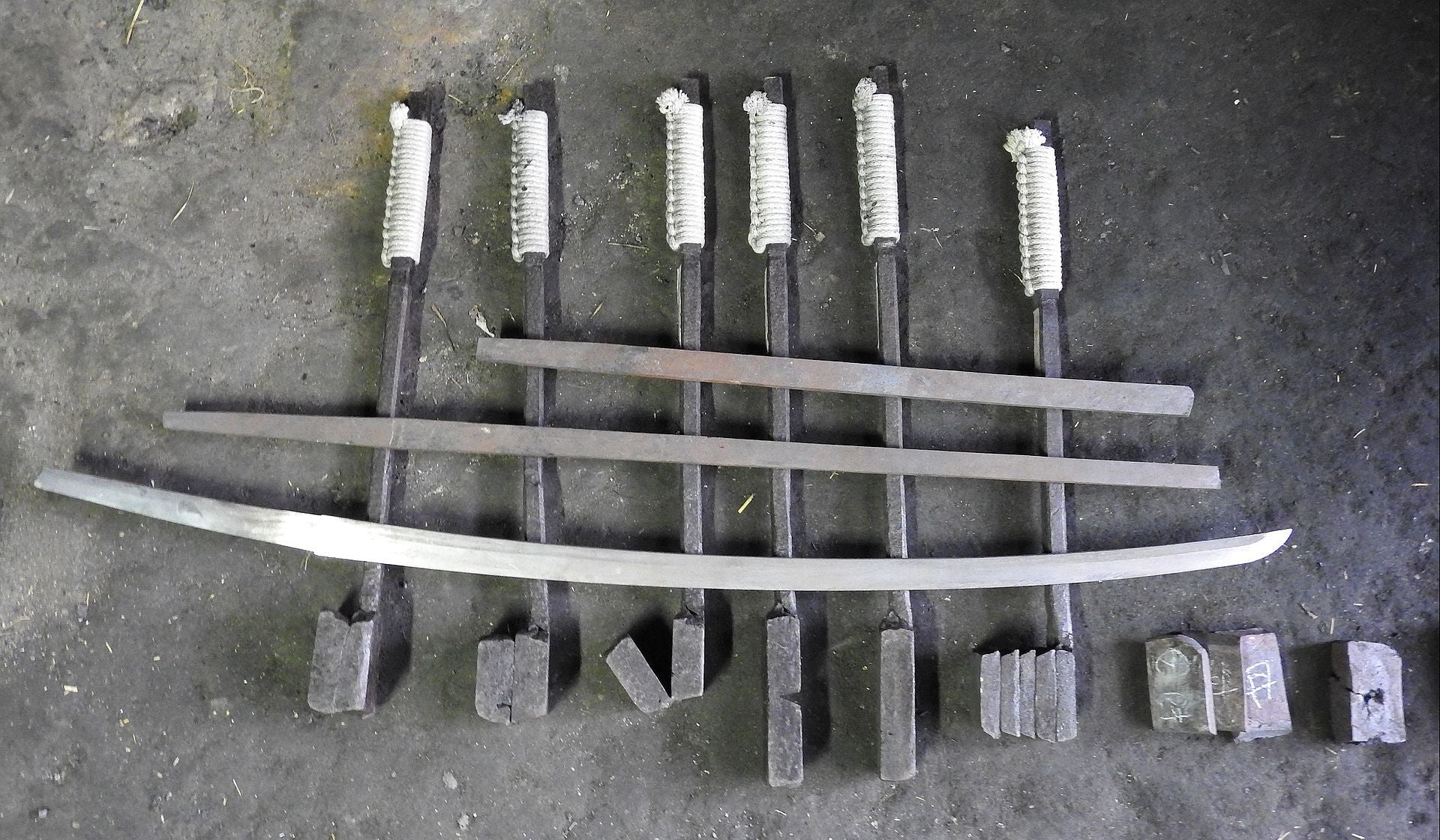Your Cart is Empty


Traditionally, most genuine katanas produced in feudal Japan featured a single, curved edge with a square guard. It was the preferred weapon for samurai warriors of this era, many of whom carried the katana wherever they went. But there Japanese swordsmiths crafted several variations of the katana, including the double-edged katana.
What is the Double-Edged Katana?
Like all double-edged swords, the double-edged katana features a sharpened blade on both sides instead of just one. They weren't nearly as common as the traditional single-edged katana, though several specimens have still been discovered throughout history.
The process for making a double-edged katana differed from its single-edged counterpart. Differential heat treatment, for instance, wasn't used in the same way as it was for single-edged katanas (we'll get to that later). After after the swordsmith finished forging the blade, he would typically pass it down to someone else who sharpened both sides of the katana.
Benefits of the Double-Edged Katana
There really weren't many benefits of using a double-edged katana over a traditional single-edged katana. With two blades, some samurai warriors may find it more effective in close-quarter combat when engaging multiple enemies. Truthfully, however, there are far more disadvantages to using the double-edged katana over its single-edged counterpart.
Why Single-Edged Katanas Were Preferred
So, what made the single-edged katana a better weapon than the double-edged? Perhaps the most notable advantage of the single-edged katana was its ability to be forged through differential heat treatment. Japanese swordsmiths would heat and cool the edge and spine of the blade at different temperatures, allowing for a hard edge and soft spine. Subsequently, these properties made the single-edged katana a superior weapon for its time, as the edge was resistant to breaking, while the spine remained somewhat flexible -- characteristics that aren't found in the double-edged katana.
Furthermore, all double-edged swords are more difficult to maintain, and the double-edged katana is no exception. Samurai warriors had to maintain two edges, dealing with chips and nicks on both sides of the sword. Instead of sharpening and repairing just one edge, they had two edges to maintain.
Finally, samurai warriors couldn't sheathe the double-edged katana like a traditional single-edged katana. For these reasons and others, the single-edged katana was the preferred sword among samurai warriors in feudal Japan. And even today, most martial arts practitioners and sword collectors will agree that single-edged swords come out on top.